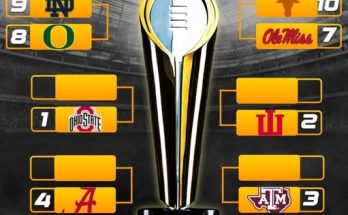When discussing the greatest quarterbacks in NFL history, names like Joe Montana, Tom Brady, and Peyton Manning often dominate the conversation. However, one name stands above the rest when considering the perfect blend of arm strength, mobility, clutch performances, and sheer toughness: John Elway. At 6’3″, with a cannon for an arm, the legs of a scrambler, and the ice-cold composure of a champion, Elway wasn’t just a quarterback—he was a force of nature. He combined Brett Favre’s arm talent, Steve Young’s mobility, and Joe Montana’s clutch gene into one unstoppable package. For those who witnessed his career, there’s no debate: John Elway is the greatest quarterback of all time.
The Arm: A Howitzer in Human Form
Few quarterbacks in NFL history could sling the ball like John Elway. His arm strength was legendary, often compared to Brett Favre’s in terms of raw power. Elway didn’t just throw passes; he launched missiles. Whether it was a 60-yard bomb on a frozen field in Cleveland or a laser-beam strike between three defenders, Elway’s arm was a weapon unlike any other. His ability to make throws from any platform—whether on the run, off his back foot, or with a defender in his face—set him apart from his peers.
One of the most iconic examples of Elway’s arm talent came in Super Bowl XXXIII, when he unleashed a perfect 80-yard touchdown strike to Rod Smith, a throw that encapsulated everything great about his game—velocity, accuracy, and timing. But Elway wasn’t just a deep-ball specialist; his intermediate throws were just as deadly. His tight spirals and bullet passes over the middle could slice through defenses like a hot knife through butter.
The Legs: A Dual-Threat Before It Was Cool
Long before the NFL embraced mobile quarterbacks as the norm, John Elway was doing things with his legs that left defenders grasping at air. In an era where pocket passers ruled, Elway was a nightmare for defensive coordinators because he could beat you with his arm and his legs. His mobility drew comparisons to Steve Young, another left-handed maestro who could scramble for first downs when plays broke down.
Elway’s rushing ability wasn’t just about escaping pressure—it was about extending plays and making something out of nothing. His famous “helicopter spin” in Super Bowl XXXII, where he sacrificed his body for a critical first down, epitomized his toughness and willingness to do whatever it took to win. That play wasn’t just a turning point in the game; it was a microcosm of Elway’s entire career—relentless, fearless, and victorious.
The Clutch Gene: Montana-Level Ice in His Veins
If there was one trait that truly separated Elway from other quarterbacks, it was his ability to perform under pressure. Like Joe Montana, Elway had an uncanny knack for rising to the occasion when the stakes were highest. His 47 fourth-quarter comebacks and 51 game-winning drives stand as a testament to his unshakable poise.
Elway’s legend was built on moments where he snatched victory from the jaws of defeat. The Drive (1986 AFC Championship vs. Cleveland), The Fumble (1987 AFC Championship vs. Cleveland again), and his back-to-back Super Bowl wins in the twilight of his career all cemented his legacy as the ultimate clutch performer. When the game was on the line, there was no one you’d rather have under center than John Elway.
The Toughness: A Warrior’s Mentality
Elway wasn’t just talented—he was tough as nails. He played through injuries, took brutal hits, and never backed down from a challenge. In an era where quarterbacks weren’t coddled by rules protecting them from big hits, Elway stood tall in the pocket and delivered strikes knowing he’d pay the price. His physical and mental toughness set the standard for what it meant to be a franchise quarterback.
Even in his final years, when most quarterbacks would have retired, Elway willed himself to back-to-back championships, finally shedding the unfair “can’t win the big one” narrative that had followed him early in his career. His Super Bowl XXXII and XXXIII victories weren’t just wins; they were coronations of a king who had battled through years of heartbreak to reach the mountaintop.
The Legacy: The Ultimate Quarterback
When evaluating the greatest quarterbacks of all time, the usual metrics apply: stats, rings, and impact on the game. But what separates Elway from the rest is that he wasn’t just a product of a system—he was the system. He carried mediocre Broncos teams to Super Bowls in the 1980s, then returned in the late ’90s to win titles with a more balanced squad. His ability to adapt and dominate in different eras of football speaks to his transcendent talent.
Elway wasn’t just a quarterback; he was a football savant. His understanding of the game, combined with his physical gifts and indomitable will, made him the most complete quarterback the NFL has ever seen. While others may have more rings or better stats, no quarterback in history could do what Elway did—dominate with his arm, his legs, and his mind, all while carrying the weight of a franchise on his shoulders.



